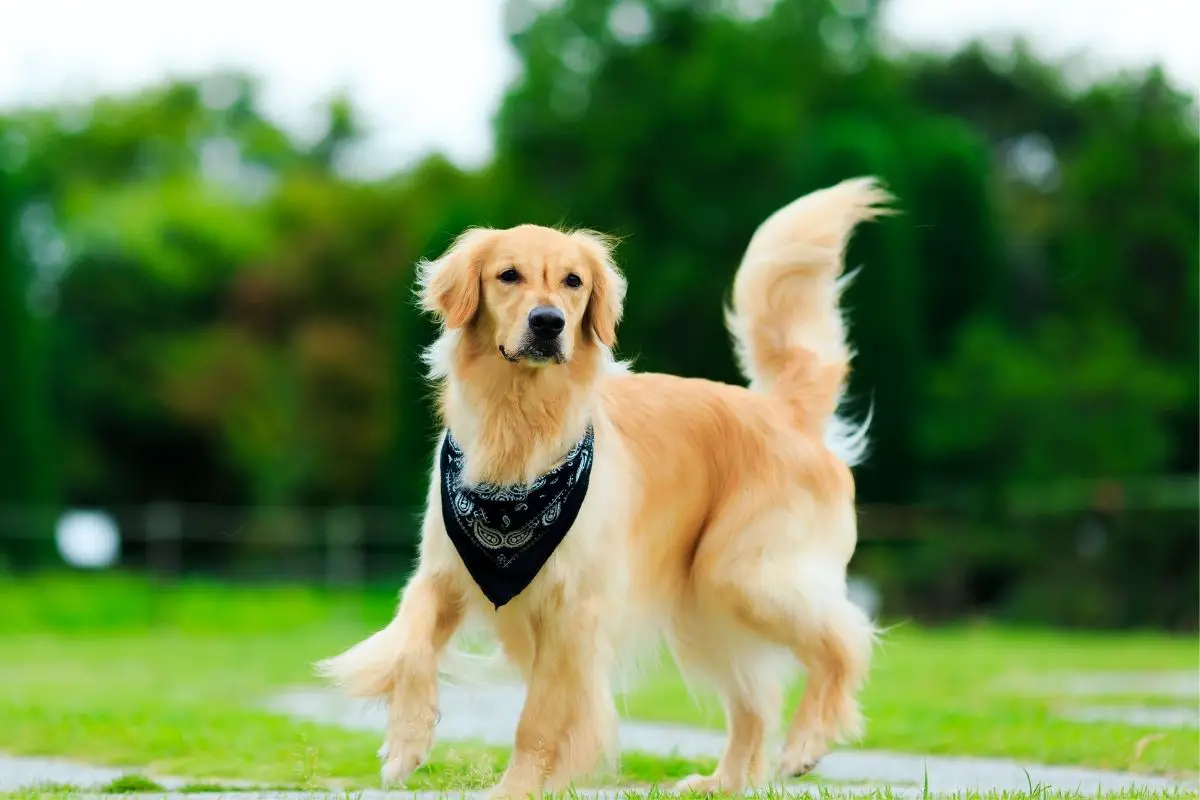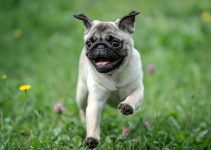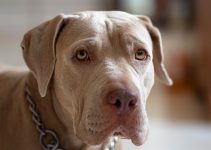Whether a Golden Retriever is Fluffy or non fluffy, You can’t go wrong with choosing a Golden Retriever puppy to add to your family. Golden Retrievers are some of the best companions to have in the home because of their loving, adorable natures.
These dogs love spending time with all the family, and you won’t have to worry about them getting attached to one person in the family rather than everyone.
Your new Golden Retriever will see everyone as a member of their pack.
These dogs are also great with children, so are an excellent choice for a family pet. Not to mention their friendly, lovable personalities!
However, you may be wondering whether you should opt for a fluffy or a non-fluffy Golden Retriever.
This could be partially down to shedding, or just whether you prefer a certain type of Golden Retriever over another.
There’s no need to puzzle any longer, though.
We’re going to give you all the information you need to know about both fluffy and non-fluffy Golden Retrievers so that you can make a fully informed choice.
So let’s take a closer look at these two types of Golden Retriever and how your puppy’s adult coat will develop!
Contents
Taking A Look At The Coat Of A Golden Retriever In More Detail
When it comes to choosing between a Golden Retriever with a fluffy coat or a non-fluffy coat, it’s important to note that fluffy Golden Retrievers are actually more prevalent.
The average adult Golden Retriever will feature the classic wavy coats that we associate with this breed.
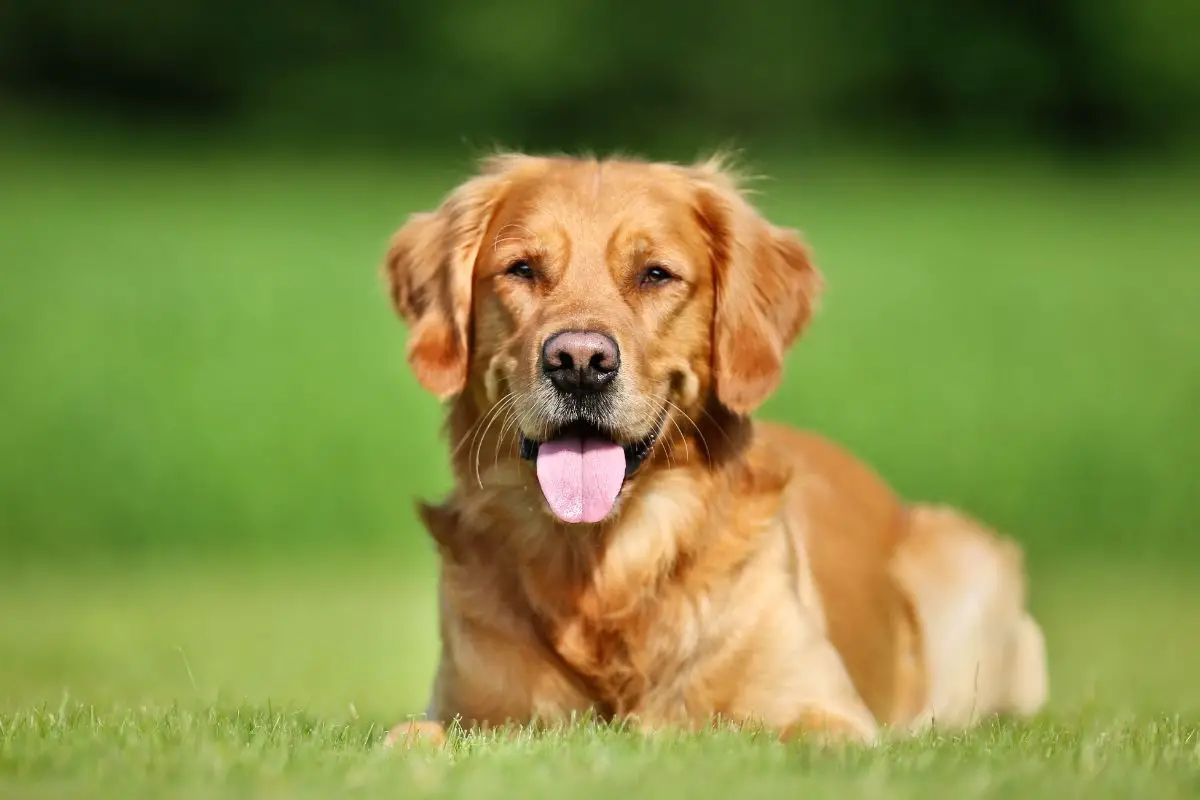
A puppy coat may be slightly fluffy, but this will develop into the classic curly coats that you associate with a fluffy dog.
As your fluffy Golden Retriever grows older, this puppy coat will develop into the wavy coats that they are known for, starting around the tail area and developing across their whole coat.
This will generally happen around when your puppy is 3 months old.
Because of this longer fur, you will likely have to implement a regular grooming routine with your dog to prevent your home being overtaken by their fur.
It will be best to implement this process when your dog is still a puppy so that they will be used to the whole thing.
But we will cover this in more detail down below!
So you may be wondering as to why some Golden Retrievers feature this classic wavy coat, whereas others don’t and are actually non-fluffy.
It may surprise you to learn that non-fluffy Retrievers are actually the smallest fraction of the breed.
There could also be a whole number of factors as to why the Retriever’s coat is non-fluffy.
Let’s take a look at this factor in more detail to try to understand why some dogs are fluffy while others are non-fluffy.
How Come Certain Golden Retrievers Aren’t Fluffy?
So now that we know the vast majority of Retrievers are actually very fluffy, it may be confusing as to why some of them aren’t actually fluffy.
But why are there non-fluffy Retrievers if this is a trait that is generally well known to the breed?
There could actually be a whole number of reasons as to why your Golden Retriever doesn’t have a fluffy coat.
Let’s take a look at some of these in more detail, so we can understand it all a bit better.
It’s All In The Genetics
So the main reason as to why your Golden Retriever is fluffy or non-fluffy comes down to their genes. T
hese are the genes that they inherit from their parents, with the fluffy gene being more predominant in the gene pool.
Your puppy’s fluffy or non-fluffy coat -including other factors such as its color – will be entirely down to their parent’s genetics.
Chances are that if your puppy’s parents also had a non-fluffy coat when they were puppies themselves, this is why your puppy has a non-fluffy coat.
The best way to work out whether this is the case will be to talk with your breeder to find out whether your puppy’s parents had non-fluffy coats themselves as a puppy or not.
This will hopefully set your mind at ease that your puppy will soon start to grow the longer, fluffier coat that is associated with the Golden Retriever.
Otherwise, your Golden Retriever could have just missed the fluffy gene altogether.
This will mean that when they have reached adulthood they still won’t have the fluffy coat that you would normally associate with this breed.
However, this doesn’t mean that your puppy is any less desirable. It just makes them more unique.
It Depends On The Variety Of Golden Retriever
One of the other most important things to bear in mind is that there are actually several types of Golden Retriever.
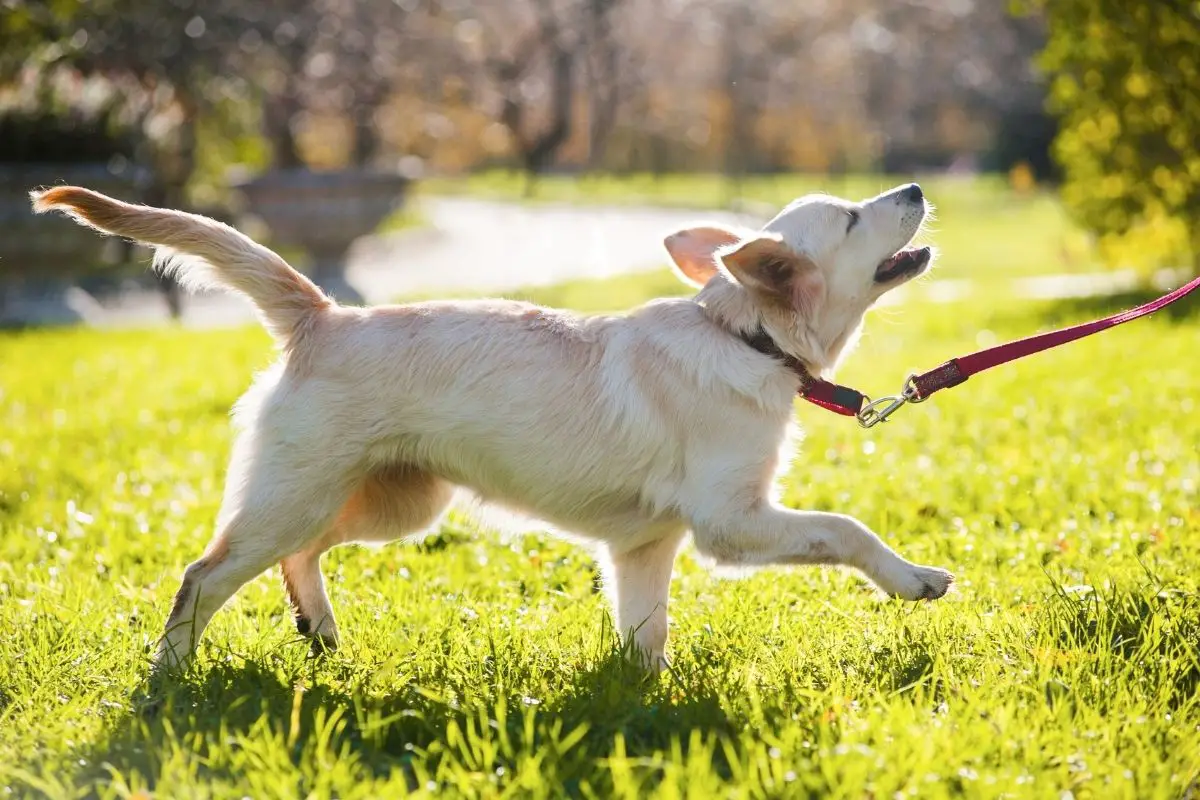
Did you know there are as many as 8 different types of Golden Retriever?
Some of these types do tend to have the longer hair that we associate with a Golden Retriever.
However, some of them are actually short haired. This means it will be perfectly normal for your Golden Retriever to have a shorter coat and to not have the fluffy coat at all.
If this is the case, then your puppy won’t develop the fluffy coat that you are thinking of.
But as we have already mentioned above, this won’t mean that your puppy is any less loveable. They will still be just as adorable regardless of their coat length.
It Depends On How Old They Are
It could of course also be down to the age of the puppy in question.
It’s important to remember that this longer fur will typically develop over time, and it will normally start to occur when your puppy has reached around 3 months of age.
Anything less than this, and of course your puppy will have that classic shorter coat.
Their fluffy coat will start to grow over the top of their puppy coat, so it’s nothing to worry about if your younger puppy hasn’t yet developed a fluffy coat of their own.
So before you decide whether your puppy has a fluffy or non-fluffy coat, it will be crucial to wait for the all essential first 3 to 4 months to pass before you can truly judge as to the state of their fluffiness.
It Depends On The Nutrition They Have In Their Diet
In order for your puppy to develop a healthy coat, they will need to be getting the right balance of nutrients and essential vitamins and minerals.
So it’s only natural that a factor as important as their coat will be influenced by their diet.
You will need to ensure that your Golden Retriever puppy has a healthy balanced diet in order for them to develop the fluffy coat that you are after.
This will mean giving them a careful blend of protein, fat, healthy stuff like vegetables, as well as amino acids such as omega 3 so that they can maintain a healthy body.
In fact, fatty acids such as omega 3 will be the all essential aspect when it comes to maintaining a healthy coat and skin.
If your puppy doesn’t have the right blend of fatty acids in their everyday diet, then they won’t have enough fatty acids to get that silky smooth coat that you’re after.
This will start to display itself in the quality of your pet’s skin and coat.
If they start to suffer from dry skin, start to shed excessive amounts of fur, or start to suffer from lots of dandruff, this is an indicator that they need more fatty acids in their diet.
The best way to eliminate this factor is to take your Golden Retriever puppy to the vet so that they can give them a check-up.
If you need to alter your puppy’s diet in any way, your vet will also be able to best advise you on this issue.
It could be dependent on any health issues they are suffering from
If you have eliminated all other factors in the conundrum of your Golden Retriever puppy’s lack of a fluffy coat, then there could be other health factors at play here.
Your beloved puppy could be suffering from a whole bunch of health issues which will then impact on the state of their fur coat.
The main reason for any coat issues will be down to the state of your Retriever’s skin. This can then affect the fur that is trying to grow through, but can’t for whatever reason.
If you notice any signs that your dog could be ill or suffering from any debilitating health conditions, it will be best to take them to the vet straight away.
Some issues to look out for include diarrhea, a reduction in appetite, vomiting, whether they display symptoms of anxiety or stress, or whether they appear to be in a foul mood for long periods of time.
The general rule of thumb is that if in doubt, take your Golden Retriever puppy to the vet so that they can try to work out the issue for you and advise you accordingly.
How To Tackle The Grooming Process When It Comes To A Fluffy Golden Retriever
So now that we know the vast majority of Retrievers are actually fluffy instead of non-fluffy, it will be important to understand their grooming needs before you decide to bring them home.
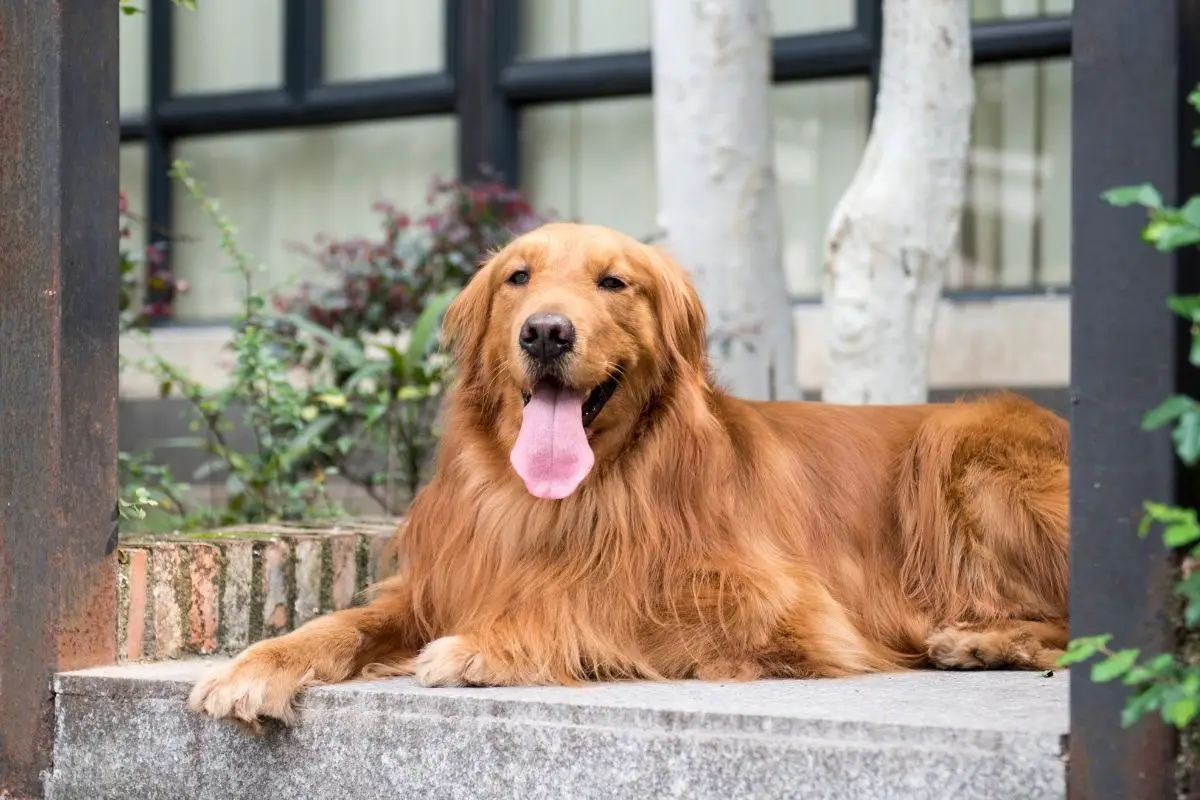
Because of their fluffy coat, your Retriever will need a fair amount of grooming to prevent their fur from becoming too matted.
The best way to tackle grooming with your Golden Retriever is to start grooming them when they are a puppy.
This will be an essential step of the grooming process for puppy owners, as it will get your new Retriever used to the whole operation of sitting still while you groom their medium length coat.
Remember that your puppy likely won’t have a lengthy coat straight away.
But the longer outer coat that is considered to be the breed standard will likely develop after that crucial 3 months period.
There’s no need to worry if your puppy hasn’t quite developed that obedient nature just yet.
By getting your little ball of fluff used to the whole grooming process early on, it will make it much easier to groom them as an adult.
It will be crucial to implement this regular grooming, as once your puppy’s adult coat starts to develop, they will be a naturally heavy shedder.
By grooming them regularly, you will be preventing a build up of fur in your home. If you don’t have the time to groom your Retriever regularly, you can of course take them to a professional groomer.
However, it will be worth noting that you will have to pay a premium price for this if you take them in for regular checkups.
Consistent grooming will be an important process for your pet as you can’t shave them or cut all of their fur off. This is because their fluffy fur coat is in place to keep them warm.
Retrievers were originally bred as a working dog, so they need this fluffy fur coat to keep them warm.
If you were to try to shave this fluffy fur coat off in an attempt to make grooming easier, you would be leaving your poor dog freezing.
If you find that their fluffy fur coat gets too long to manage, then it will be better to give them a little trim.
Avoid shaving them at all costs, as this type of coat is required to keep them insulated during winter, and cool during summer.
The whole nature of double-coated dogs is to let their fur do this work for them. This whole temperature management would be ruined if you were to shave off their silky coat.
Your grooming routine won’t be all that intensive with this type of coat, either. Your fluffy ball of Retriever will only need to have their fluffy fur coat brushed around once or twice a week.
This will help to keep their dry hair knot free and sleek, as well as collect any excess fur they may be shedding.
If you were to do consistent grooming, this would prevent further problems occurring in the future.
Another thing to bear in mind is that regular grooming will give your Retriever that shiny coat that you are after.
It allows the natural oils that occur on their skin to maintain that adorable fluffy coat.
It will be best to use a slicker brush for grooming your Retriever at home, as this will give you enough surface area to play with.
How To Deal With Grooming A Non-Fluffy Golden Retriever Coat?
Okay, so we’ve covered everything you need to know about grooming a fluffy Golden Retriever. But what about Retrievers that have shorter hair?
You will still need to groom your Retriever, even if they have shorter fur.
This is because they are still heavy shedders, and will need to be groomed regularly to get a better control of all that pet hair.
If you were to leave your non-fluffy Retriever ungroomed, you would have lots of pet hair gathering around the home, which would then clog up your vacuum.
So even though this shorter hair means you will have less fur to worry about, there will still be plenty of pet hair to go around if your non-fluffy Retriever isn’t groomed regularly.
The same rule will apply with a non-fluffy puppy. It will be best to get them used to the whole grooming process when they are young, so that they will obediently allow you to do this when they become an adult.
Plus who knows, if you start grooming them before 3 months’ old, they may develop that fluffy coat which we associate with the Golden Retriever breed.
You will need to use a slightly different brush for grooming your non-fluffy Retriever. For tackling the shorter fur, you will be better off using a bristle brush, as this will be more than enough for tackling the short hair.
Because this type of brush isn’t as intensive as a slicker brush, it will make the whole grooming process much smoother for your pet.
Just as regular grooming will be essential for a fluffy Retriever, it will also be crucial for your short hair Retriever.
Regular grooming will activate those natural oils on your pet’s skin, ensuring that they get the silky coat that you are after.
By using regular grooming from a young age, you will also be better at acclimatizing your pet to the whole process.
This will make regular grooming less of a challenge when they are an adult, as they will know to sit still and allow you to get on with the job.
In Summary
So there you have it! You now know everything there is to know about the two main coat types Fluffy and Non Fluffy of a Golden Retriever.
These are either fluffy or non-fluffy Golden Retrievers, and it is mostly down to the genes that they have from their parents.
It’s nothing to be worried about if your Retriever doesn’t appear to have a fluffy coat when they are very young, as this typically develops after 3 months of age.
However, if you end up with a non-fluffy Retriever, this is nothing to be concerned about. It just means you have a more unique pet.
Regular grooming will be essential for both fluffy and non-fluffy Retrievers, as it will ensure that their fur is kept in top shape.
As Golden Retrievers are heavy shedders, this does mean they have certain grooming requirements for you to meet to avoid becoming overwhelmed with fur.
The grooming requirements that you will need to follow will just include brushing once or twice a week, with different brushes depending on the length of their fur.
So after learning all there is to know about both fluffy and non-fluffy Golden Retrievers, you should now have a better idea of which will be best for your family.
The Golden Retriever makes a wonderful family pet because of their fantastic nature.
